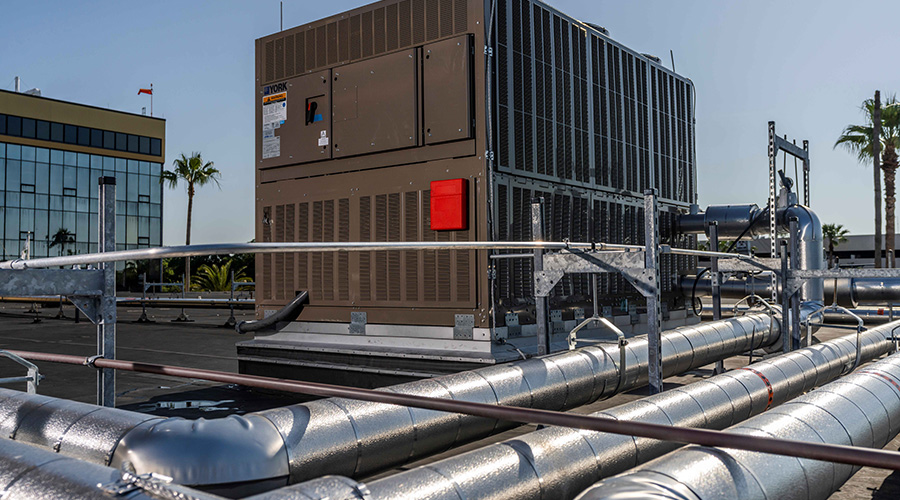Motor and Drive Dynamics
For properly sized motors to work optimally, they must be compatible with their drive controls. Some manufacturers make both the motor and the drive, while other companies specialize in one or the other. "Testing to make sure those two components - the motor and its drive - are working together is important," says Tony Hood, vice president of WEG Electric Motor Corp.
If the motor and the drive are at odds, one consequence can be voltage spikes that eventually will destroy the insulation around the motor's wiring. When the power is constantly turned on and off, power spikes of 1,600-2,000 volts can occur in a 15 kilohertz cycle. Hood says that if this happens only occasionally, it can be like shooting a gun at the wall. A small hole might be made, but the hole will not compromise the wall. But if the switch flipping is continuous, it can be like taking a machine gun to the wall.
"It's such a significant issue that the National Electrical Manufacturers Association (NEMA) developed standard MG-1 part 31," Hood says. "This standard addresses the motor's insulation system and how it handles the delta rise time - the amount of change in voltage over the amount of time it takes to make that change."
Above 1,600 volts, some manufacturers put in higher spike-resistant-type wire. Line filters and load reactors also can smooth out the ripple effect of voltage when it needs to travel some distance from the drive to the motor.
Sometimes motors run at full speed, with the extra energy bled off.
"This is the equivalent of getting in a car and putting the accelerator to the floor, then controlling the speed with the brakes," says Robert Boteler, chairman of NEMA's Motor & Generator Product Section's promotion committee and director of marketing for Emerson Motor Co. "You can control the speed that way, but it's definitely not an efficient method for pumping liquids or moving air."
Basic Motor/Drive Specs
Motor specifications come from the maintenance and engineering manager or specifications writer, generally based on MG 1. They also come from a member of the Institute of Electrical and Electronics Engineers (IEEE), under its standard 841. For international operations, motors might be specified under IEC standards such as 60034-5, says Mike Logsdon, engineering manager for the Motor Technologies Group for Regal-Beloit Corp.
"But basically, NEMA is the underlying specification for all motors in North America," Logsdon says.
Adjustable-speed drives also benefit from a new NEMA standard. Variable-frequency drives can significantly reduce the energy used by fans, pumps and other motor-driven machinery under varying loads, according to the Consortium for Energy Efficiency (CEE). NEMA ICS 7-2000 covers adjustable-speed drive requirements, including ratings, construction, testing, performance and manufacturing.
Regulatory Energy Considerations
The Energy Policy Act of 1992, which covers the efficiency levels of general-purpose industrial motors, became effective October 24, 1997. For international customers, motors might need to meet the IEC 60034-5 Standard.
In addition to national regulations, international and national standards, motors also can be subject to regional regulatory and energy guidelines. For example, California has a regulation that promotes using NEMA Premium(tm) motors, Boteler says. New York state's pending energy code also is expected to require purchasing NEMA Premium motors.
"Through NEMA, we can offer a standard for different organizations, that all major motor manufacturers can abide by," Boteler says.
Related Topics:











